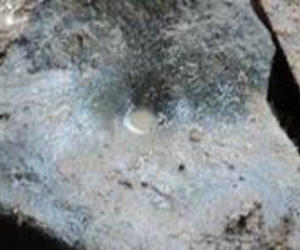Archaeological Finding in Banes, Holguin Province
- Submitted by: manso
- Society
- 06 / 02 / 2011

By Alberto Santiesteban Leyva / Radio Banes / radioangulo.icrt.cu / Wednesday, 01 June 2011 15:53. A stone mortar made by Cuban aboriginals that lived in Banes centuries ago. Photo: Alberto Santiesteban Leyva An unusual archaeological finding has just taken place in the Cuban province of Holguin, where 14 mortars appeared before the astonishing eyes of the men digging a hole in the back yard of the house of Martha Rodriguez Alvarez, at 3603 Bruno Merino street, in the city of Banes.
The mortars are rudimentary pieces that might belong to a Siboney or Taino tribe, Cuban aboriginals living in the area before Spanish arrivals, says graduate Rafael Quinones, an expert from Indocubano Bani museum in Banes, who praised the authenticity of the pieces.
A big stone bead was also found in Banes. Alberto Santiesteban Leyva But sort of a bead was also found, a big stone piece never seen around here before, despite several other previous diggings.
This is an exceptional finding due to the fact it is a collection of home use devices, mostly of stone made mortars of different sizes and fine quality, used by the country’s early inhabitants.
Well diggers from Banes found by accident these valuable archeological pieces. Alberto Santiesteban Leyva But also the fact these evidences are found in an area not marked up to the moment as an archaeological site, located in the downtown of the city of Banes, where experts believed no human settlement was reported.
The complete collection talks of an early and late human presence in Cuba, and its finding ratifies Banes’ nickname, the country’s Archaeological Capital. (Translated by Radio Angulo)
Comments